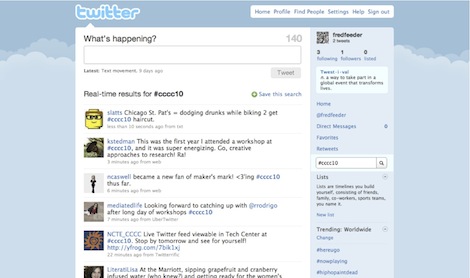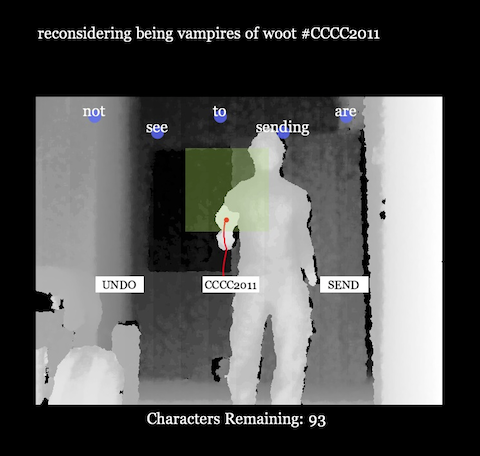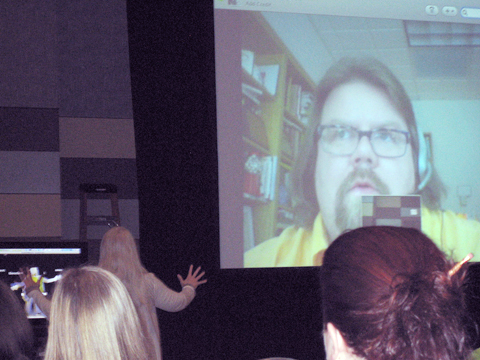Hash Tags

Overload is the obvious problem of an information space in which information is gathered automatically, for activities both momentous and mundane, shared with the world. Tagging becomes a crucial way of making information locatable.
For example, hashtags, the cryptic little phrases prepended with #, provide ways to quickly filter an ongoing stream of data, locating information trends in broad, fast-moving flows. Usually informal, hashtags are words that informal communities invent, words that engage and act. (Editors' note: In 2024, we updated the link in this paragraph due to Twitter's—now X—changes in search features. The search is for: touchdown Packers.)

In 2011, I worked with Ryan Kornheisl and Anne Wysocki to develop a Kinect-enabled Twitter client (noelradley, 2011). We appropriated the hashtag #cccc2011, being used by attendees at the annual Conference on College Composition and Communication, to create a pool of text for remixing. The camera in the Kinect follows users' gestures as they push text around on the screen, assembling a tweet to send back to Twitter.
People using the system operate at and across the boundaries between virtual and real, body and text. This has long been true: Printing itself played with those boundaries. Telecommunications accelerates that.

